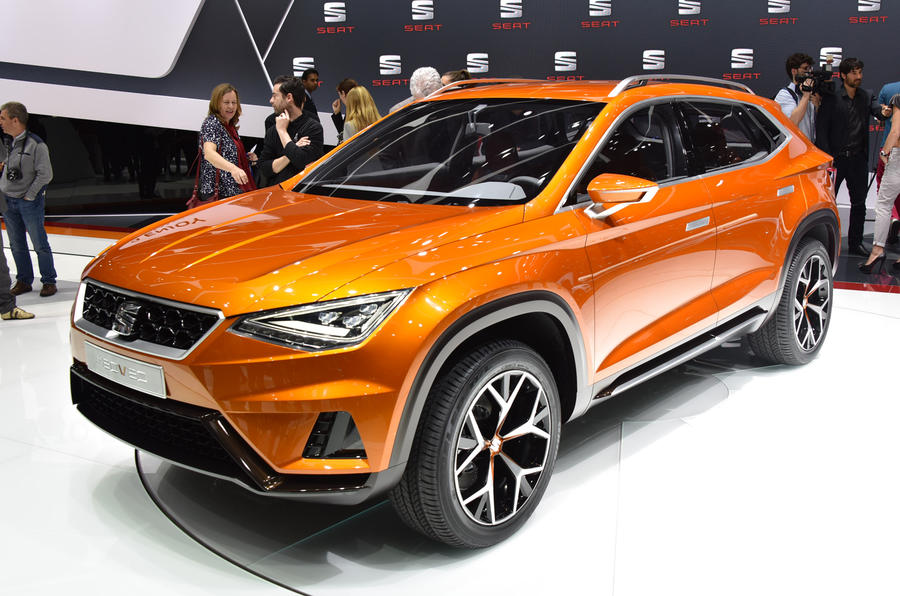Seat has previewed its future design direction and the third model in a potentially three-strong range of SUVs with a new concept, called 20V20, at the Geneva motor show.
Seat describes the 20V20 as a four-door sports coupé which combines elements of an SUV and a mid-sized estate car. The name means ‘vision viente viente’, the Spanish for 20:20.
Design boss Alejandro Mesonero-Romanos told Autocar that the concept showed how the design language of the current Leon would evolve through models launched from 2016 to the end of the decade, with large elements of the design set to feature in particular in the next generation Ibiza in 2016.
"This is where we want to be in 2020," he said.
But perhaps as significant is how it could morph into a model in its own right to become possibly the third of three Seat SUVs.
A Leon-based Qashqai rival with a design not influenced by the concept will launch in 2016 and be followed into production soon after by a smaller Juke-sized SUV that will imminently be confirmed for production.
Mesonero-Romanos said the Vison 2020 project is "what we target" after the launch of those cars.
He said: "It is not approved yet by the board, but if all goes well this car is a promise for the future."
Mesonero-Romanos describes the future design as "a big evolution from Leon", which is "even more sculpted with the lines, more brutal, tighter and more precise".
Seat has chosen to reveal this concept, which previews a model potentially so far away from launch, as a show of strength and confidence in the brand, and to show future ambition beyond it's already confirmed model plans.
"We don't just want to show the next car, but the next cars," Mesonero-Romanos said.
The concept car is larger than a Qashqai, almost 4.7m in length, making it the size of an Audi Q5. If it makes production by 2020 as expected, it will be a seven-seater. It is based on the largest version of the Volkswagen Group's versatile MQB platform, and could potentially be built on the same production line as planned VW and Skoda SUVs of the same size, despite its dramatic look.
Mesonero-Romanos said the starting point was ensuring perfect proportions for the car, particular in the side profile. The design mimicked the movement of a runner ready to surge forward by briefly rocking back on their heels, with a more 'cab back' profile and slight negative slope at the rear added to its dynamic stance.
The interior is also significant in showing how Seat will evolve the design from that of the current Leon. The interior style is instantly familiar from the Leon but altogether more futuristic, and controlled using what Mesonero-Romanos describes as a 'Seat Core'.























Add your comment